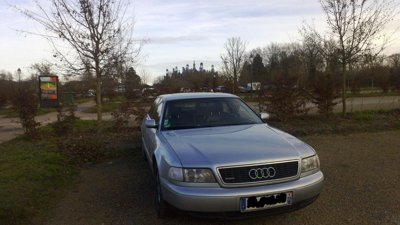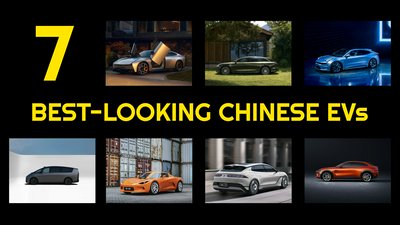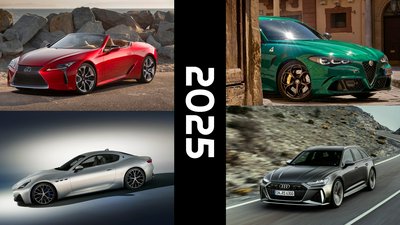techParis
The Sudden Boom of All-Wheel-Drive
People want more, and car makers are happy to oblige; however, DrJLT argues that consumers are getting a worse experience as a result....

Just a couple of decades ago, most cars were two-wheel-drive, and we miraculously survived this "dark age" even though it statistically rained and snowed more (or is global warming a scam? 🙂) — all the more reason for a slap on the back and awarding ourselves with the much "better", "advanced", "safer" all-wheel-drive, isn't it? There were occasional four-wheel-drive vehicles, but 4wd is never meant for on-pavement driving and to enable 4wd some procedures (such as rolling back) had to be followed. Technical details can be found on Wikipedia.
Then, a couple of major makes, Subaru and Audi, began heavily pushing for AWD as their unique selling point. Their chassis layouts are practically the same: longitudinally-mounted engine at the front followed by a transaxle and propeller shaft to the rear, effectively leaving most of the weight of the driveline in front of the front axle. We know today that this isn't the ideal configuration, as transversely-mounted engine allows for more balance and better packaging; however, my personal take is the flat-fours Subaru wanted to use would be awkward if mounted transversely (too wide) while the V8s Audi planned wouldn't allow for a torsen center differential if this configuration (too long). Till this day, they remain the only major makes that sell AWDs like this. I had an old Audi some years ago. It wasn't reliable in any way, and required constant repairs. Handling was subpar: Notably, the nose liked to tilt when cornering at speed. Worse still, it wasn't as stable in the wet as you'd imagine given its Quattro-branded AWD system. Why is this so?
- AWD helps overall traction, as engine torque is split over all four wheels, but it doesn't help braking or cornering or in fact any element of handling.
- AWD adds weight, and this weight is mostly rotating mass. The kinetic energy of rotating mass is considerably higher.
- A rear weight-bias improves stability. This is also why it's advised to put newer tires in the back and why good sports cars (e.g. Ferraris) have more weight in the back than the front. AWD systems increase weight entirely in the front.
In the last decade, however, other major German makes started to follow this trend and move to AWD en masse. Mercedes-Benz now has only AMG GT and SL-class that are strictly RWD; many models are only available in AWD in smaller markets. Japanese makes have followed this switch, though RWDs are still abundant. In these cases, longitudinally-mounted engines are mounted more rearward, usually allowing for a balanced subframe, and an external propeller shaft drive the front differential. This is more expensive to manufacture than a FWD-based transverse layout, but if offers two advantages: 1. Bigger engines, notably I6s and V12s can be used. 2. The marketing department can brag about "RWD feel" because this type of AWD systems are based on RWD layouts. However, does it offer true RWD feel?
- When torque is sent to the front wheels, steering must be mechanically affected. This influence could be positive or negative depending on which "feel" you prefer.
- RWDs won't have the same level of overall traction, provided that your engine is big enough. However, the feeling that traction comes from the back when accelerating is unique. AWDs tend to feel more like FWDs in this respect unless torque is sent mostly to the back (as is the case for sports cars like Lamborghinis).
These days, crossovers with AWD based on transverse FWD layouts are the most popular class of cars. They're also sold on the promise of safety, but besides having potentially worse handling due to the previous points these AWD cars also harbor other pitfalls:
- Improved overall traction can lead the driver to misjudge the road condition. With a RWD car, road condition issues are first noticed when you can't get moving; with an AWD, they may be first noticed when maneuvering at speed.
- If we talk about crossovers, they also suffer from high center of gravity, another hazard for handling and safety. Unsurprisingly, they tend to have single-vehicle accidents (while SUVs and pickups have even more single-vehicle accidents).
Car makers love the AWD craze, because they get to sell more things. Their marketing departments are particularly happy, because there's an extra point to sell on. For consumers, benefits are miniscule, but the penalty on fuel economy is very real. No matter, there're winners and losers with everything, and it depends only on how you look at it: consumers can be winners, too, because they now can have an AWD car — doubling the drive wheels for far from double the price.
Below are pictures of my old AWD car from many years ago.
Gallery Hook: 1
This article was originally published on my old site jlteng.com on 10 December 2017.
Gallery: Audi D2 A8 4.2 Quattro
France









